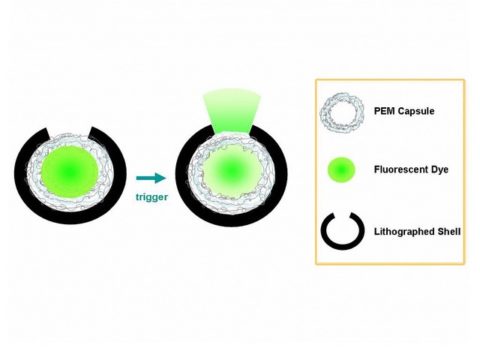According to a report from Cientifica, healthcare will benefit from nanotechnology sooner than many other areas during the next decade. The organisation’s report, Nanotechnology in Drug Delivery 2011, discusses the potential for targeted drug delivery in treating cancer, for instance, and gives a breakdown of the nanotech state of the art in this and other therapeutic areas. The reports suggests that the nanotech market in its entirety will be worth a trillion dollars as soon as 2015.
In an independent review of the field, Mohammed Shuaib Khan and colleagues in the Department of Pharmaceutics, at JSS College of Pharmacy, in Karnataka, India, explain how engineered nanoparticles (NP) (entities smaller than 100 nanometres in diameter) are an increasing focus of research and potential applications, whether nanospheres or nanocapsules. The great potential of nanotechnology in medicine, aside from patent extension on old drugs and the profits longed for in the Cientifica report, are the advantages they bring in terms of getting medicine into the body at the right dose, in the right form and reducing side effects.
Researchers across the globe are working on countless approaches to nanoparticles and nanocapsules based on bottom-up, bottom-down and even lateral approaches to drug delivery systems. Nanoparticles composed of polymers and many other materials are being developed and tested with the emphasis on improved uptake, targeting and side effect reduction, whether small molecules, antigens or gene therapy agents. Delivery of vaccine antigens to gut-associated lymphoid tissues (GALT), controlled release, and reduction of gastrointestinal irritation are high on the agenda, for instance.
“Knowledge of the fundamental relationships would allow NP to be designed with defined size and surface characteristics for delivery to specific cells or organs in body.
![]() Mohammed Shuaib Khan, & D.V. Gowda (2011). Nanoparticles: a boon for modernisation of drug delivery: a review Int. J. Nanoparticles, 4 (4), 389-411
Mohammed Shuaib Khan, & D.V. Gowda (2011). Nanoparticles: a boon for modernisation of drug delivery: a review Int. J. Nanoparticles, 4 (4), 389-411
Creative Commons Image courtesy of flickr user pennstatelive
